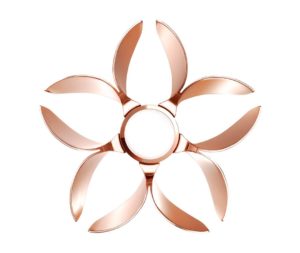Tokyo is going to host the summer 2020 Olympic Games this time and the official torch of the Game has released last week. The design of the torch is a bit flowery. In fact, the rose-gold aluminum torch is shaped according to the national flower of Japan – Sakura cherry blossom. If someone will watch it from from the top, it displays five sections, or petals, that resemble the flower. Each petal ignites its own flame, which are united as one bright flame in the center. Tokujin Yoshioka is the architech, who has designed the torch for the summer games. The material that is used for it is actually the recycled aluminium that is collected from the temporary housing that was constructed after the Great East Japan Earthquake of 2011.
Tokujin Yoshioka is the architech, who has designed the torch for the summer games. The material that is used for it is actually the recycled aluminium that is collected from the temporary housing that was constructed after the Great East Japan Earthquake of 2011.
The intention behind the design was to promulgate peace in the region. As Yoshioka wrote on his website “I designed the Tokyo 2020 Olympic Torch in the wishes for peace and healing of hearts in recovering area.”
Yoshioka used the same aluminum extrusion technology that’s employed in the manufacturing of Japanese bullet trains, to get the unique shape of the torch.
Usually March is the beginning of Japan’s widely known cherry blossom season. So it’s the perfect time to release the cherry blossom designed Olympic torch. The month also marks the beginning of the Olympics Torch Relay, a time when the torch is brought across Japan and delivered to the Olympic Games. The torch’s 121-day journey from Fukushima to Tokyo kicked off on March 26, 2020.
Yoshioka stated, ‘In 2020, the Olympic flame will traverse throughout Japan like cherry blossoms blooming, and lights our way to hope.’
However, Japan finds itself at a pivotal moment in anticipation of the 2020 Olympic Games in Tokyo. Undoubtedly, this summer Games is a grand event to attract international tourists and it could have an outsize impact on the country for years to come.
Ahead of the occasion, Japan National Tourism Organization (JNTO) plans to grow inbound tourism to 40 million by 2020, Which is a significant jump from 2017, when the country attracted 28.7 million international visitors.

